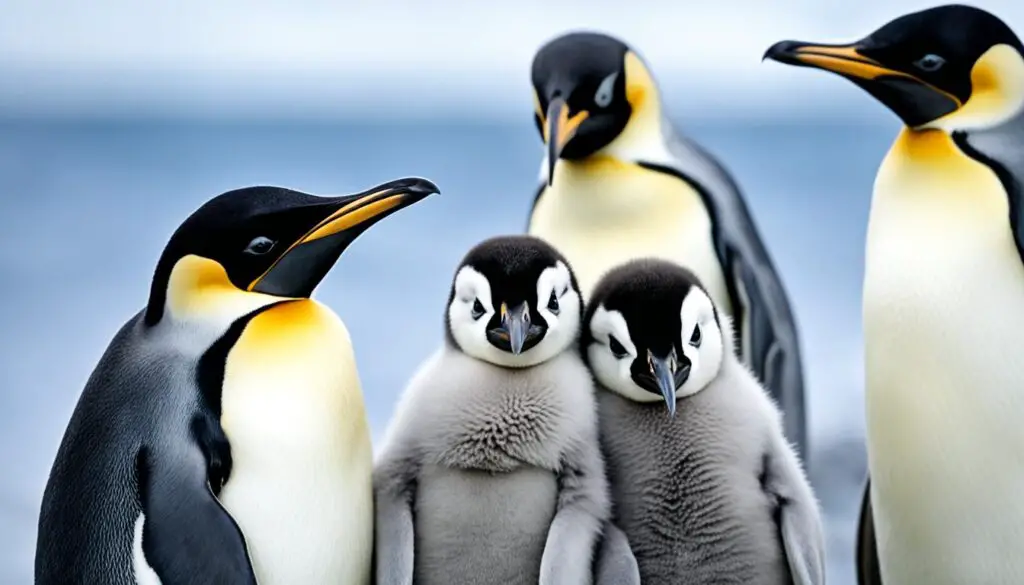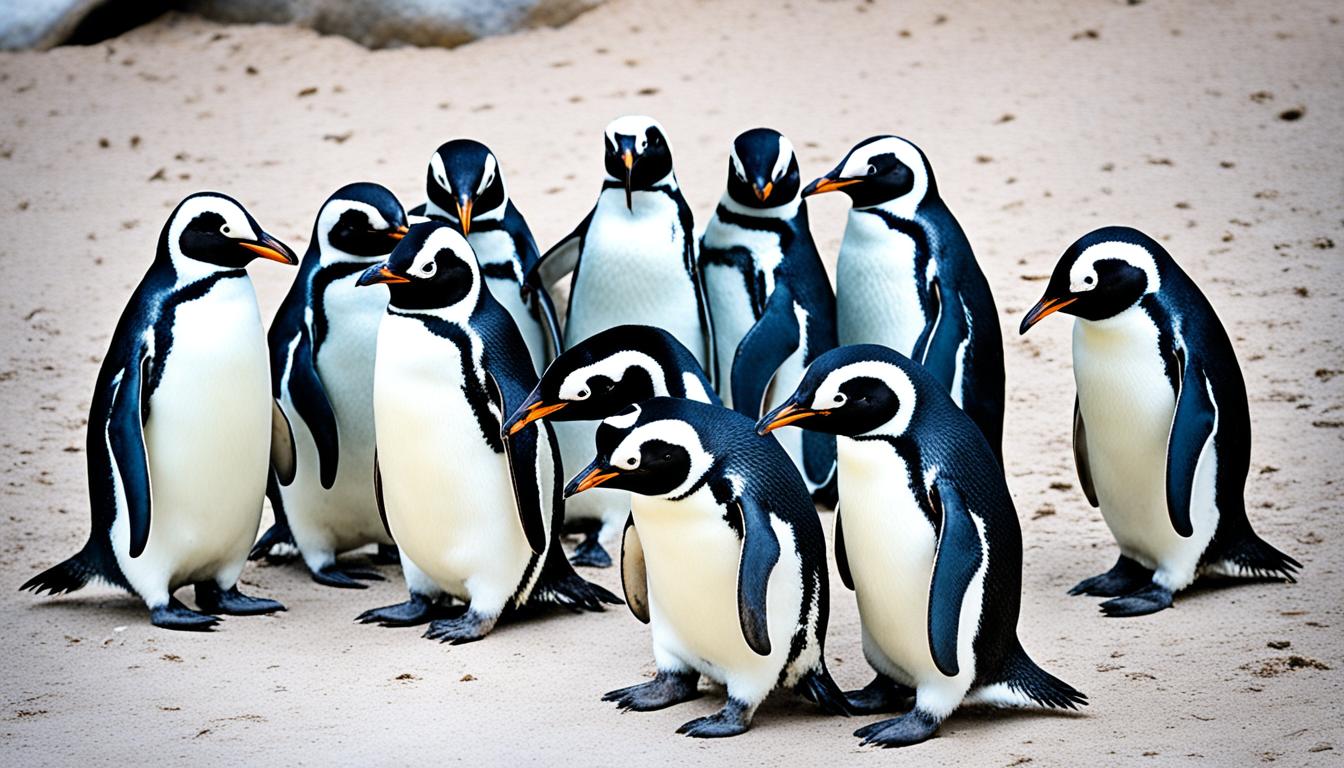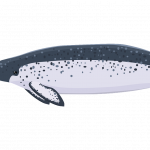Penguin parenthood is a fascinating part of the animal kingdom. It shows how these amazing creatures take care of their young. You might wonder how penguins care for their young. The answer is in their special parenting ways that help them survive in tough conditions.
Penguin parenting is a team effort between males and females. They work together, showing great cooperation and sacrifice. Let’s dive into the world of penguin families and see how they take care of their chicks.
Understanding Penguin Parenting Behavior
To understand penguin parenting, we must see how they care for their young. Adult penguins have two main parenting styles. Some are very protective, keeping their chicks safe from danger. Others are more laid-back, focusing on their chicks’ needs without always watching over them.
Both types of parents take turns incubating eggs and finding food. This teamwork is key in their tough environments. It helps their chicks survive tough times.
The way penguins live together also shapes their parenting. We see how personal and group efforts blend. This mix of care helps the whole penguin family.
| Parenting Style | Characteristics | Role in Chick Survival |
|---|---|---|
| Attentive and Protective | Constant vigilance, guarding against threats | Enhances safety, reduces predation risk |
| Relaxed | Focus on nurturing, less emphasis on vigilance | Encourages independent foraging skills in chicks |
| Cooperative | Shared responsibilities for incubation and food | Optimizes resource use, ensuring food stability |
| Community Influence | Group behaviors impacting individual parenting | Strengthens social bonds and collaborative care |
How Do Penguins Care for Their Young?
Penguins show amazing parental instincts in raising their young. They take turns feeding their chicks, which is a key part of their care. This shows how dedicated penguins are to their offspring’s survival.
Feeding Practices
Many wonder, how do penguins care for their young? The answer is in their unique feeding habits. Parents feed their chicks by regurgitating food they’ve eaten. This food is full of nutrients and is vital for the chicks.
Parents can tell their chicks from others by their calls. This ensures they feed only their own chicks. Older chicks sometimes help feed younger siblings, but why they do this is still a mystery.
Brooding and Warmth
Keeping chicks warm is another key part of penguin care. New chicks lack waterproof feathers and are very cold. Adults use their brood patch to keep the chicks warm.
This close contact helps protect the chicks from getting too cold. By feeding and keeping their chicks warm, penguins help them survive in tough environments.
Penguin Chick Care: The Essential Early Months
The early months of a penguin chick’s life are key for growth. They rely on their parents for food and safety. After hatching, which can take up to three days, the chicks grow fast. Both parents play big roles, showing how strong penguin families are.
Hatching and Initial Growth
When a chick hatches, it’s covered in fine down feathers. These feathers don’t keep it warm, so the parents must keep it cozy. Chicks can’t go in the water until their feathers get waterproof, which takes a few weeks. This shows how important keeping the chick warm and fed is.
The Role of Both Parents
Both parents are crucial in the first months of a penguin chick’s life. They take turns feeding and caring for their young. For example, male emperor penguins make a special food that feeds their chick for weeks. This teamwork shows how penguins work together to care for their chicks.

| Aspect | Details |
|---|---|
| Hatching Duration | Up to 3 days for chicks to break through the egg |
| Development of Plumage | Waterproof feathers develop after several weeks |
| Parental Roles | Both parents alternate in chick care tasks |
| Feeding Method | Curd-like substance provided by male penguins |
| Initial Care | Chicks receive warmth and protection from parents |
Penguin Family Dynamics: Co-Parenting and Nesting
Penguins have amazing family dynamics, mainly because of their strong co-parenting. Both parents take turns caring for their young. They share duties like incubating eggs and feeding chicks. This teamwork creates a stable home for their babies and shows how important it is in penguin families.
By working together, they make sure their chicks get the care they need to grow well.
Shared Responsibilities Between Parents
In penguin families, both parents play a big role in raising their young. They take turns keeping the eggs warm during incubation. This shows how committed they are to their babies.
After the eggs hatch, both parents feed the chicks. This shows how dedicated penguins are to protecting and raising their young. It’s key to their successful breeding.
Nesting Habits and Strategies
Penguins have different ways of nesting, depending on where they live. Some use natural spots or burrows, while others build nests with pebbles and other items. These nesting strategies keep their eggs and chicks safe and warm.
They show how penguins have adapted to survive in various environments. Learning about these strategies helps us appreciate their complex lives and how they keep their populations healthy.










